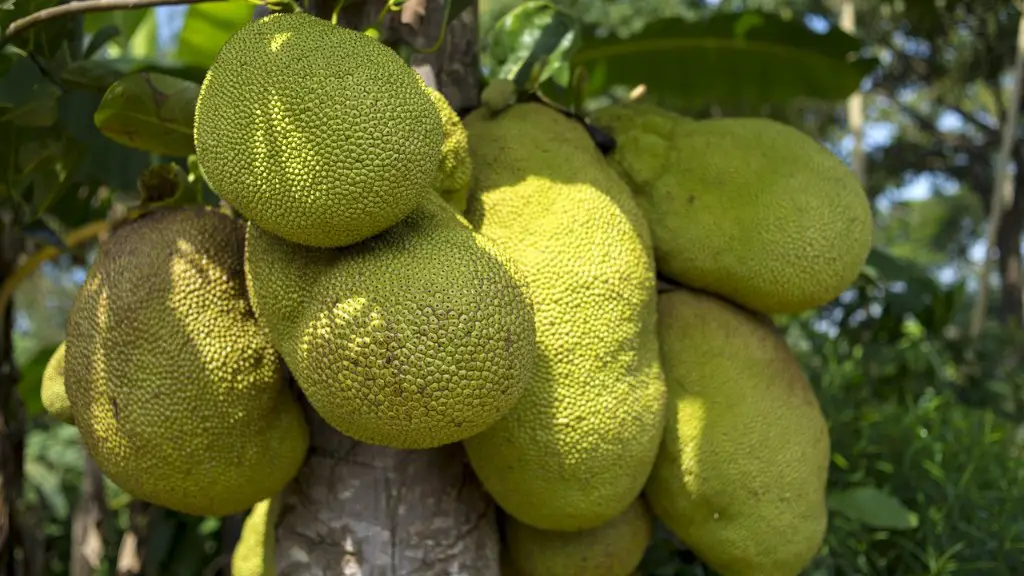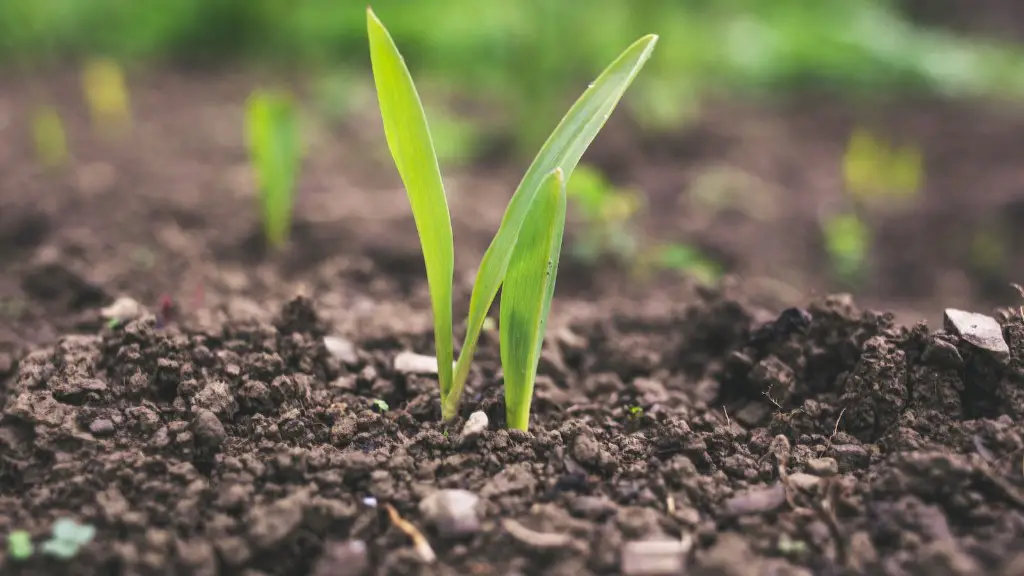Humans rely heavily on water for their survival, but it is also essential for agriculture. There’s an ongoing debate about how much Total Dissolved Solids (TDS) should be present in water for agriculture. This article looks into the factors to consider when trying to define the right TDS levels in water for growing crops.
The amount of TDS in irrigation water is an important part of horticulture. The level of TDS in water affects root growth, nutrient uptake, and other factors. Low levels of TDS discourage growth whereas overly high levels of TDS can be harmful for plants. It is essential for balance of TDS in irrigation water for agricultural purpose.
TDS levels can be measured using a TDS meter. The meter measures the electrical conductivity of solutions, so the higher the TDS reading, the more dissolved solids are present. A TDS meter can be used to monitor and identify any changes in the water’s TDS which might be harmful to plants.
The optimal TDS level in water for maximum uptake and growth of plants varies based on plants, their growth stage and the type of soil in which they grow. Broadly speaking, TDS levels between 100–500 mg/L are considered ideal for agricultural irrigation. The World Health Organization recommends that drinking water should have a maximum TDS level of 1 500 mg/L.
The TDS levels attributed to water depend on the quality of source water. Sea water, for example, is too salty, with the TDS levels routinely higher than 50 000 mg/L. So, agricultural irrigation with sea water isn’t a viable option.
Many sources suggest that rainwater and well water bodies often have TDS levels below 100 mg/L, making them good sources for agricultural irrigation. However, its possible that the water may contain other contaminants that can be detrimental to the plants, so it is essential to keep a close watch on the water for its suitability for agriculture water.
Groundwater typically has a wider range of TDS levels. The range can vary from less than 100 mg/L to 750 mg/L or in some cases up to 1 500 mg/L. Groundwater with higher levels of total dissolved solids should not be used for agricultural purposes.
Factors that Affect TDS Levels
The electrical conductivity of water depends on a lot of environmental factors. These include anthropogenic sources of pollution such as agricultural runoff, sewage, mining activities, industrial waste and more. But weather plays a major role too. Factors like evaporation, rain, and snow contribute to changes in the TDS levels in water bodies.
Groundwater is also affected by geological features like limestone and gypsum, which can dissolve at different rates and increase overall TDS levels. In some cases, groundwater is also impacted by the distance from the shoreline and its saline water containing a high level of dissolved solids.
Additionally, plants extract nutrition (like nitrogen, calcium, phosphate and iron) from the soil via the crop plants which may increase the concentration of minerals in groundwater. Thus the water with high levels of TDS is generated, which can be harmful for crop growth.
Agriculturists should also stay aware of chemical and organic contaminants that might not necessarily be detectable in low TDS water. In such cases, specialized tests are necessary to detect these compounds and ensure that the water is suitable for agricultural purposes.
In general, rainwater, river water and well water are the preferred sources for irrigation. However, the TDS level must be monitored for any changes that could affect growth or make the water unsafe for plants.
Descriptors of TDS in Water
TDS meters measure a range of impacts that make up the TDS concentration in water. These include cations (positively charged ions) and anions (negatively charged ions). Cations typically include sodium, potassium, calcium, and magnesium. Anions normally consist of bicarbonate, chloride and sulfates.
When dissolved in water, these ions form complexes and become hydrated. They can cause harm to plants and affect their ability to absorb other vital elements. Thus, these ions need to be monitored and kept at a low level. High levels of cations can cause problems such as salt stress, which can reduce germination rate, decrease water availability and result in nutrient imbalance.
High water salinity also affects the character of soil, as the dissolved phosphates and nitrates are reduced in a salty environment. Over-irrigation of fields can cause salts to accumulate, so periodic flushing of salt out of the soil is essential. Thus the TDS levels need to be ensured and maintained according to the plants’ need.
TDS levels in water also depends on the pH value, dissolved oxygen, and turbidity. Elevated bacteria levels can cause a reduction in pH values and increase the risk of fungal and virus attacks. Thus, water must be tested in order to assess more than just the TDS levels.
Viruses, bacteria, and parasites such as E. coli and Cryptosporidium can be removed by treating the water with ultraviolet light, chemical disinfection, or boiling it. TDS levels also must be kept in check in order to maintain the water quality suitable for plants.
Economic Impact of TDS in Water
The quality of water for agricultural purposes has a direct correlation with yields. High salinity in water can lead to decreased rates of germination, stunted growth, and yield loss. These consequences can have a direct economic impact on the agriculture industry.
The risk of crop loss and dairy production decrease due to water salinity. This can have an adverse effect on economic activities such as the production of food items and farming related services.
Thus, farmers and agriculturists must be aware of the economic impact of TDS levels in water and must use the right methods and systems to accurately measure the TDS level, thus ensuring the safety of farmers and growers.
In addition, organic materials such as humus and clay found in agricultural irrigation water can increase the TDS levels of the water. This can reduce the nutrition uptake capability of the plants and affect the overall capacity of the soil.
Organic materials generally reduce the impact of TDS levels by creating a porous soil, which in turn decreases the TDS levels of irrigation water. However, if these materials are in excess, then farm productivity could be adversely affected.
Measuring and Managing TDS in Water
Digital meters can be used to measure the TDS levels in water bodies. These meters measure the electrical conductivity of solutions. The cations and anions of the solutions are then displayed in units such as parts per million (ppm) or milligrams per litre (mg/L). Further, the readings can be used to gauge the suitability of the water for agricultural purposes.
Farmers should measure the TDS levels regularly. Irrigation systems should be managed properly in order to prevent any over-watering or evaporation. Any treatments of the water should be done based on periodic readings and analysis.
The water can also be treated with chemicals such as calcium chloride, sodium sulfate, and calcium carbonate to reduce the TDS levels. The solutions may also contain a buffering solution which helps buffer the pH level depending upon the region and plant type.
In general, using the right amount of water for irrigation and supplementing it with the right amount of nutrients is essential for optimal plant growth. This is especially true for water with higher TDS levels, which must be checked regularly to ensure that plants don’t suffer from any nutrient deficiencies.
Balancing Nutrients and TDS in Water
It is important to adequately regulate the amount of nutrients in water and have the right TDS levels in place. The level of TDS in conjunction with the right balance of nutrients, creates an ideal environment for plant growth.
Thus, the nutrient composition of water must also be monitored since TDS is only one piece of the puzzle in terms of plant health. In addition to TDS, phosphorus and nitrogen are essential components for optimum propagation of crops. The quality of water is also important in order to prevent any mineral deficiencies.
Growers should balance the composition of the nutrients in their plants in order to maximize their crop productivity. This process involves testing the water to test for a wide range of factors. Specialists can help grow the plants to the desired level by applying the right quantity and quality of water.
Ultimately, the ideal amount of TDS in water for agriculture depends on the type of plants and the soil conditions in which they are grown. The TDS level must be monitored and adhered to in order to ensure optimal plant growth and to protect against any potential risks associated with excessive TDS levels.
Ensuring Quality for Better Yields
Growers must not only test the TDS levels and balance the nutrients, but they must also ensure the quality of water by filtering out any harmful contaminants. This can be done through sediment filters, activated carbon filters, and reverse osmosis (R.O.).
These filters help in removing sediments, bacteria, viruses and other pollutants that can have an adverse impact on the crops, leading to reduced yields. Furthermore, the water should also be tested for hardness and alkalinity levels.
Alkalinity is a measure of the buffering ability of water. It reflects the calcium carbonate concentration present in the water and helps in appropriately regulating pH levels. Water hardness is a measure of the amount of dissolved calcium and magnesium ions in water, which can affect the nutrient availability of soil.
Growers should maintain the hardness and alkalinity levels in order to ensure good crop yields, along with ensuring that the water contains the right TDS level and balance of the necessary minerals and nutrients.
Making Sure the Soil is Fit For Purpose
The impact of the TDS levels on plants is context-dependent. The effect of salinity depends on factors such as the soil in which plants grow and the type of crop. Thus, when measuring TDS levels, agriculturists should factor in the type of soil and how soil affects the impact of TDS levels on the crop.
The structure of soil in terms of pH levels, availability of oxygen, and air, etc., also play a role in determining the impact of the TDS levels on plant growth. Soil structure should be given due consideration when planning for crop growth and deciding which type of irrigation is the best for the particular crops.
Soils that are highly clayey or have poor drainage can be more prone to salinity buildup and can cause problems with obtaining adequate TDS levels. Sandier soils with good drainage can aid with drainage of the extra salts avoiding buildup.
Permeable soils with regular rain and irrigation are the best option for managing irrigation water with higher TDS values. The quality of soil must be ensured at the outset before determining the amount and quality of TDS levels in water to avoid any adverse effects on the crops.





